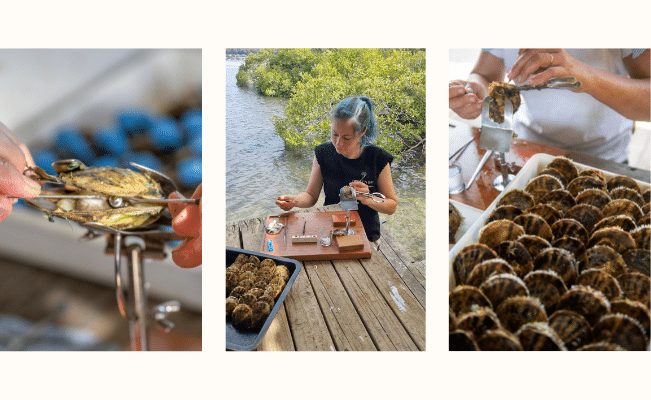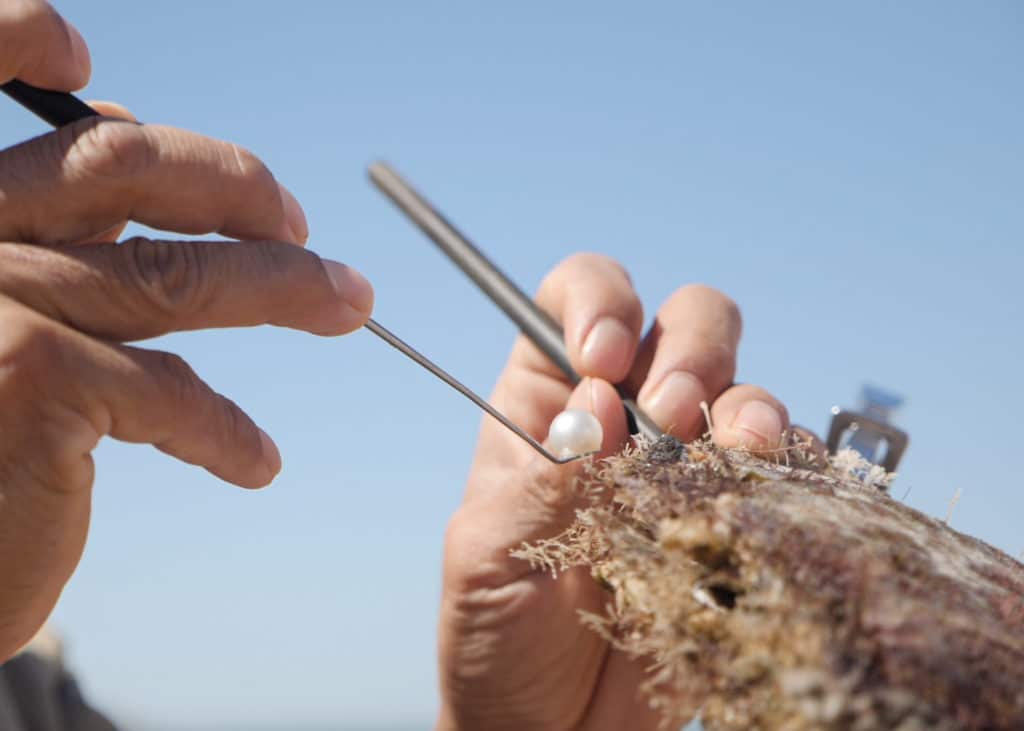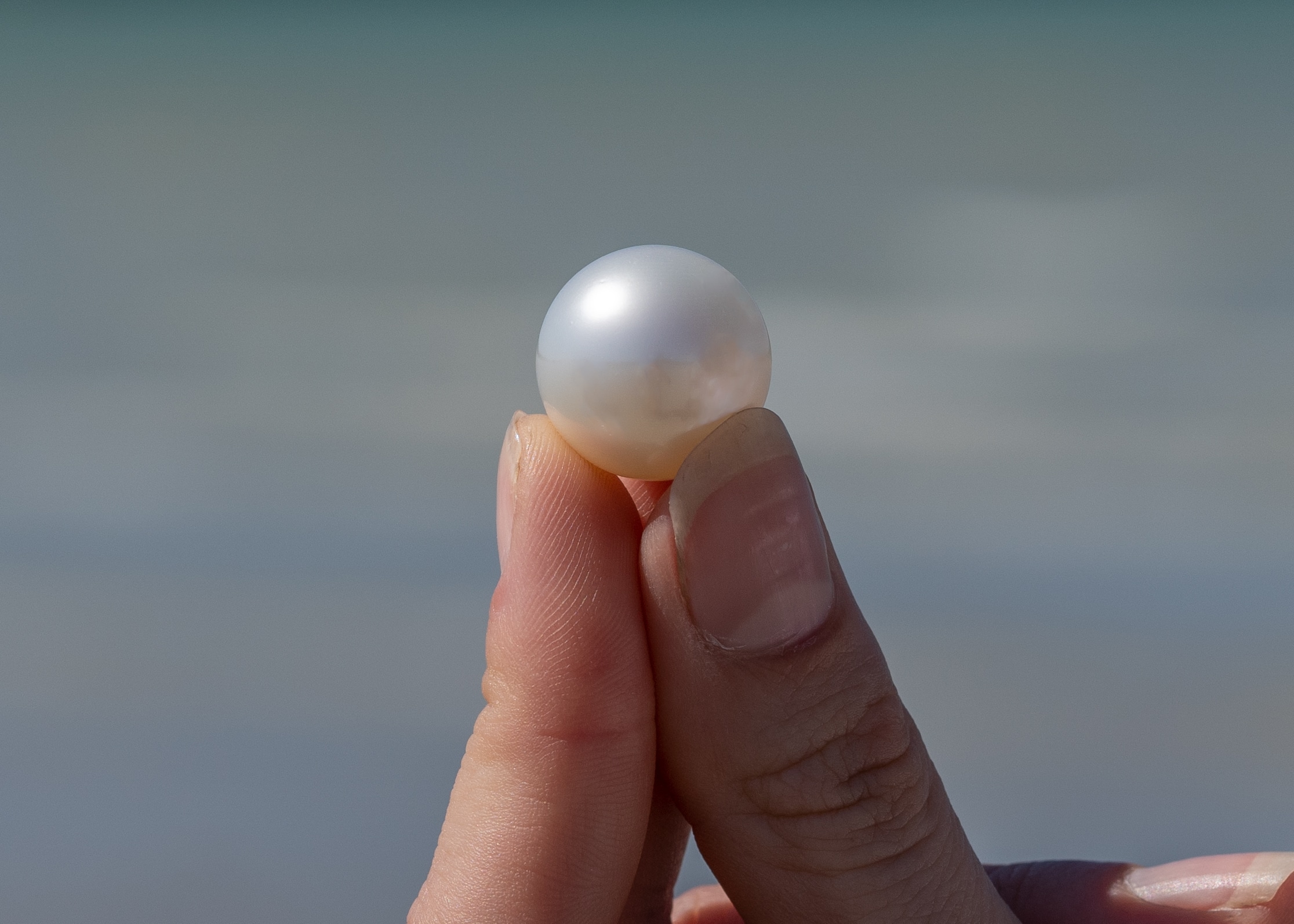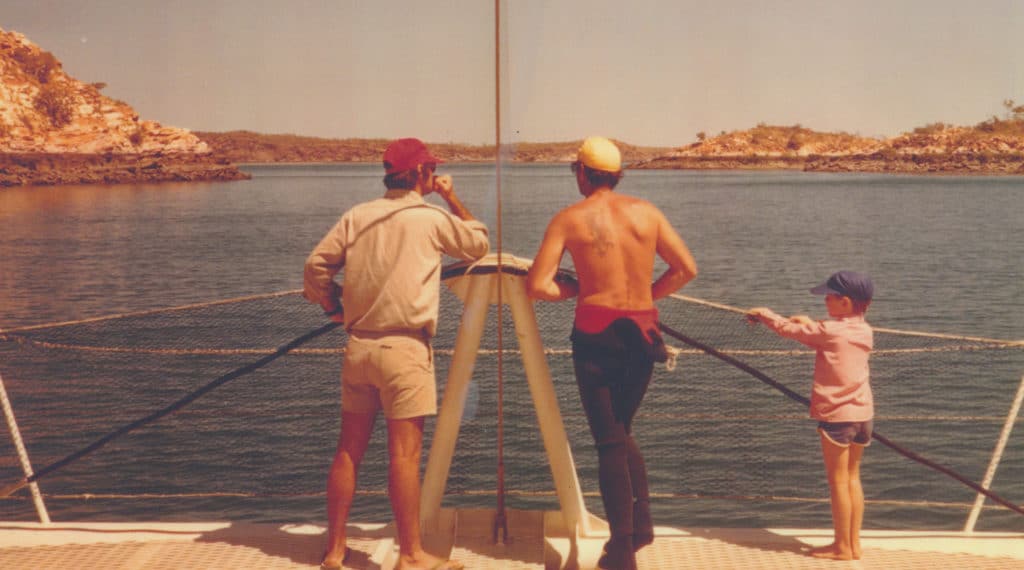
- For two years, Broken Bay pearl farm has been on the road to recovery from the devastating effects of not one, not two, but three major flood events. All of which followed unprecedented bush fires and a global pandemic.
- The culmination of three floods has led to the biggest hit the pearl farm has experienced since it began in 2003, wiping out the farm’s total population of adult and juvenile pearl shell.
- Today, Broken Bay Pearl Farm has reached a major milestone in their recovery with the first seeding of pearl shell in many years.
After opening its doors to the public in 2018, Broken Bay pearl farm was on the brink of major expansion.
Set to increase its production of seeded pearl oysters from 30,000 per year to more than 1 million, NSW’s only pearl farm were poised to expand their offerings of locally grown pearls and immersive pearl farm experiences from their ‘Shellar Door’ on the banks of the Hawkesbury River, to include the introduction of an entirely new seafood delicacy to the local market – Akoya pearl oyster meat.
All this changed after the devastation of three flood events.
The pearl farm took the main hit from the first flood in 2020 losing almost all breeding, juvenile and harvest-ready pearl shell for both seafood and pearls.
According to owner, James Brown “It was heartbreaking for our team to see years of hard work go down the drain and literally wash out to sea with the remarkable plume of freshwater that is reported to have gone 30kms out into the Pacific Ocean”.
A small number of adult pearl shell which are found in the wild and collected by pearl divers for broodstock, miraculously survived those floods. This created the chance to start over again with the next generation of baby pearl shell nurtured by a team who have worked tirelessly to rebuild the pearl farm from scratch.
During the second and third floods, Broken Bay pearl farm had less to lose, and it seems that new ways of dealing with these extreme events may be paying off.
“Somehow today, with the passage of time and a massive team effort, we find ourselves with surviving pearl shell that are stronger and healthier than ever, ready to be cultured for a pearl that we hope to harvest in a few years” said James.
As it can take four to five years to grow a pearl shell and then a pearl, natural disasters such as floods can wipe-out a pearl farm, setting them back many years assuming they are even able to get back on their feet.
Pearling is a long-lead game with best efforts ultimately resting in the hands of Mother Nature.
For James, “we learn from each major blow, how to prepare for and better handle our pearl shell and farming infrastructure in extreme and sometimes catastrophic environmental strikes. Perhaps these disasters will help people understand the true value of a pearl – the massive effort, huge risks and ultimately, the offerings of our natural world”.
In April last year, James woke to the news of a third flood about to hit Broken Bay pearl farm in NSW, the same night a cyclone was bearing down on his WA pearl farm north of Broome at Cygnet Bay.
“I am not sure it gets any more stressful than this as a pearl farmer – but our teams on both sides of the country responded incredibly well and I am proud to say that both pearl farms are well and truly on the road to recovery.”
Broken Bay Pearl Farm team celebrate the start of pearl seeding this month and this major milestone in flood recovery presents a pathway to the ultimate goal – a beautiful gem harvested from local waters, now only a couple of years away.
And the good news keeps flowing in, as Broken Bay pearl farm’s collaboration with the James Cook University genetics team are set to announce the start of an important Akoya pearl shell breeding program.
While it will take years before the farm is cultivating large numbers of shell again, the building blocks to revive the business are in place and James Brown is confident Broken Bay pearl farm can bounce back.
No stranger to adversity, in 2020 James Brown was the first pearl farmer to be awarded Australian Farmer of the Year, in recognition of his innovation and resilience after surviving the devastating effects of climate change and the global financial crisis. Ironically, this honour was bestowed just as the first flood event hit.
Like his pioneering grandfather Dean Brown who established the company 77 years ago, James knows that through hardship and adversity you need to innovate and adapt, find a new way forward, and learn to do things better.
“I am confident that everything we are working towards prior to the floods will pay dividends and believe it or not, after overcoming all these challenges, I can actually see light at the end of the tunnel.”
For more information on Broken Bay Pearl Farm, and James Brown’s pearling challenges view Landline episode.
– ENDS –








